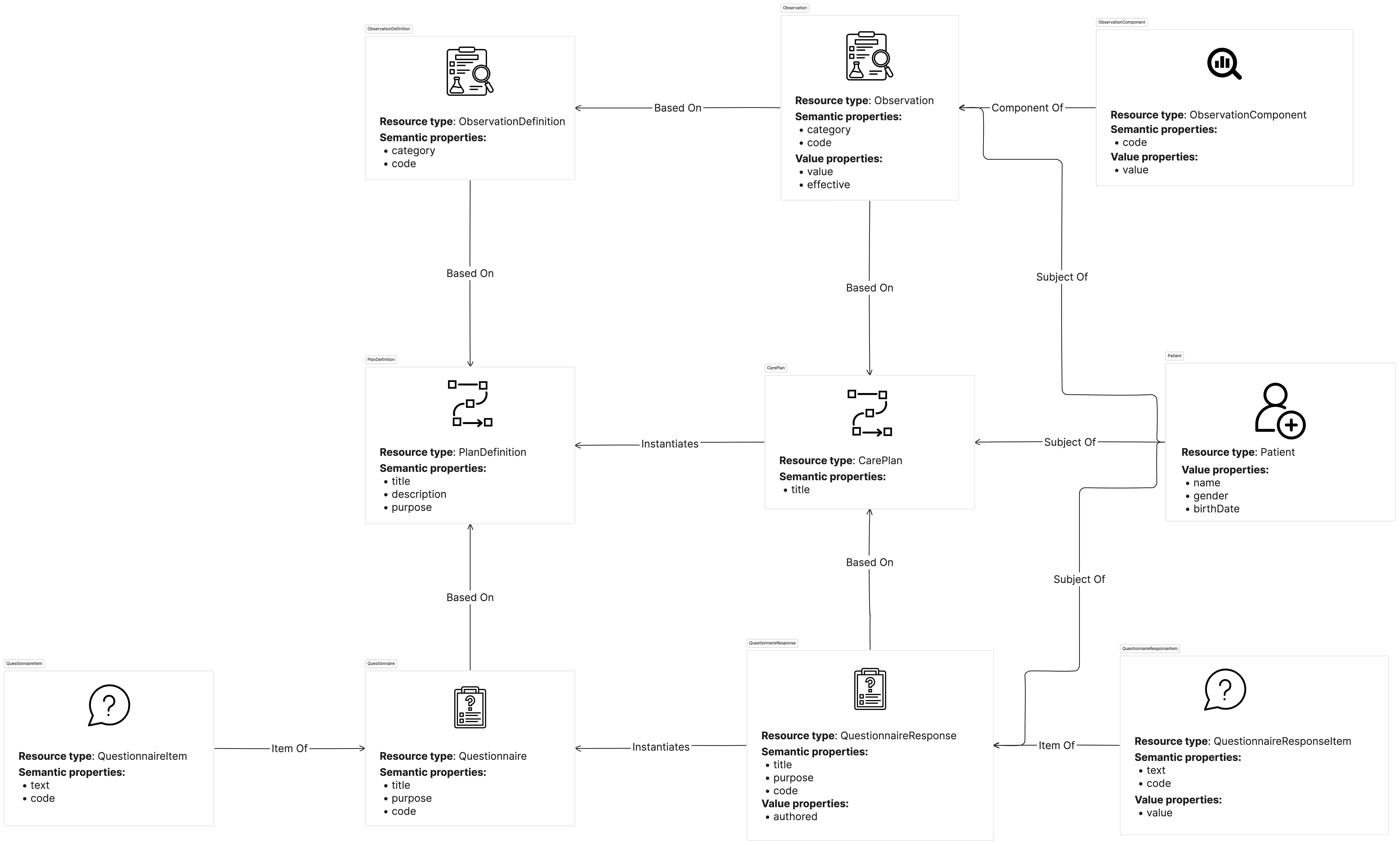Getting started
Introduction
What is the Awell Ontology?
An ontology enables the classification and organization of information. For Awell specifically, it defines the various components and relationships within the healthcare ecosystem. It serves as a comprehensive semantic and operational layer that overlays your data.
It can be helpful to think about data in the Awell platform living in two places: the data layer and the Ontology layer.
Data layer
In the data layer, data is stored inside datasets, which typically represent tabular data like you might find in a spreadsheet or database. At this stage, especially external data, is very heterogeneous and not normalised.
Datasets typically originate from two main sources:
- Internally-produced: data produced by the Awell platform as care flows get designed and orchestrated
- Externally-produced: your organizational data sources that are synced into the Awell platform and data from 3rd party providers
Ontology layer
In the ontology layer, data is stored in Resources & References representing real-world concepts like a patient, observation, or encounter, while References represent the relationships between the Resources.
The Ontology layer transforms the raw data from tabular datasets—structured as rows and columns—into a set of comprehensible concepts that can be easily understood by anyone within the organization.
The data serves as input for the Ontology, while the Ontology itself functions as the operational layer for your organization. Creating an Ontology from raw data typically involves establishing data pipelines to produce normalized and curated datasets, which are then structured into the Ontology.
Ontology at Awell
Awell enables you to design and operate care flows with ease, integrating data from various systems effortlessly. The Awell Ontology serves as a comprehensive documentation, detailing all the resources you will use in your care flow design journey, their properties, and how they interconnect.

FHIR
Our ontology is based on the FHIR framework as this is a widely-recognize standard in the healthcare industry. It facilitates data exchange between healthcare systems, ensuring interoperability and ease of integration.
Benefits
There are two key benefits:
- It simplifies the data exchange between systems
- It helps translate clinical concepts into actionable care flow components
Imagine being able to use something like this to not just identify patient cohorts but also to use as a basis for designing and operating care flows:
From the ADT feeds received in the last 3 days, start a follow-up care flow for every person taking sitagliptin with an A1C above 6.5 measured in the last 14 days even if they've never been diagnosed with diabetes.
This illustrates the power of the FHIR based ontology
- Messages from an ADT feed can easily be converted into data that can be used in care flows.
- Clinical concepts are translated into actionable care flow components:
- A1C level is an Observation (already available in the Awell Ontology).
- Sitagliptin is a medication (soon to be added as MedicationRequest and MedicationDispense resources in the Awell Ontology).
- Diabetes is a Diagnosis (soon to be added in the Awell Ontology).